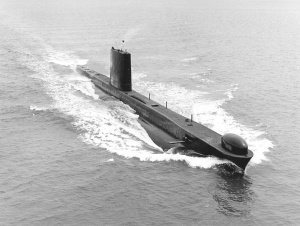Related Research Articles
Several ships and one submarine of the Royal Navy have borne the name HMS Dreadnought in the expectation that they would "dread nought", i.e. "fear nothing". The 1906 ship was one of the Royal Navy's most famous vessels; battleships built after her were referred to as 'dreadnoughts', and earlier battleships became known as pre-dreadnoughts.
Seven vessels of the British Royal Navy have borne the name HMS Amphion, after the Greek hero Amphion.
Seven ships of the British Royal Navy have been named HMS Orion, after the hunter Orion of Greek mythology:
Four ships of the Royal Navy have been named HMS Hermione after Hermione, the daughter of Menelaus and Helen in Greek mythology.
Sixteen vessels and two shore establishments of the Royal Navy have been named HMS Phoenix, after the legendary phoenix bird.
Eight ships or submarines of the Royal Navy have been named HMS Anson, after Admiral George Anson:
Three vessels of the Royal Navy have been named HMS Ambush.
Three ships of the Royal Navy have been named HMS Adamant:
Seven ships of the Royal Navy have been named HMS Orpheus. Orpheus was the magical father of songs in Greek mythology.

HMS Rorqual (S02) was a Porpoise-class submarine launched in 1956. She was built by the Vickers shipyard in Barrow-in-Furness, Cumbria, England. The boat was named for both the rorqual, a family of whale, and the earlier Second World War-era submarine of the same name.
Eight ships of the Royal Navy have borne the name HMS Bonaventure, and another was planned:
Two ships of the Royal Navy have been named HMS P36.
Two ships of the Royal Navy have been named HMS P38.

HMS Rorqual (N74) was a British mine-laying submarine, one of the six ships of the Grampus class of the Royal Navy. She was built by Vickers Armstrong, Barrow and launched 27 July 1936. She served in the Second World War in the Mediterranean and in the far east. She was the only Grampus-class submarine to survive the war, and she is considered the most successful minelaying submarine of World War II, sinking 57,704 GRT of enemy shipping, 35,951 of which through her mines.
Two Royal Navy ships have been called HMS S1:

USS Endurance (AM-435/MSO-435) was an Agile-class minesweeper in service with the United States Navy from 1954 to 1972. She was scrapped in 1974.
Eleven ships of the Royal Navy have borne the name HMS Porpoise, after the marine mammal, the Porpoise:
A ship and two submarines of the Royal Navy have been named HMS Ursula:
Several ships of the Royal Navy have borne the name HMS Cachalot, after the marine mammal, the cachalot, or sperm whale:
References
- Colledge, J. J.; Warlow, Ben (2006) [1969]. Ships of the Royal Navy: The Complete Record of all Fighting Ships of the Royal Navy (Rev. ed.). London: Chatham Publishing. ISBN 978-1-86176-281-8.